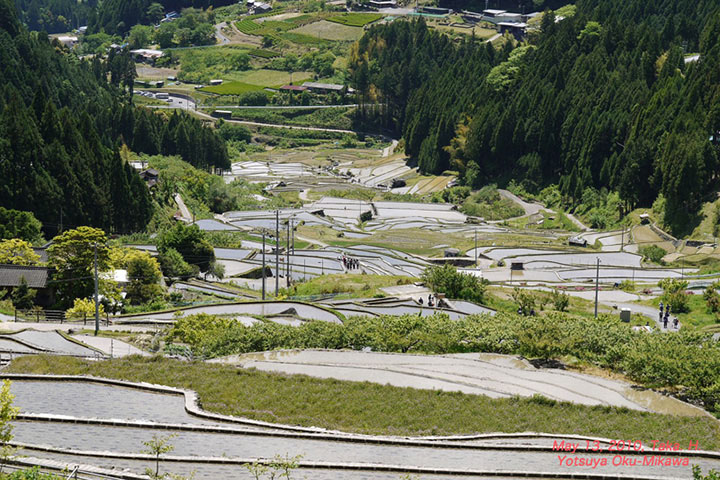Suikei-en Garden of Keihanna Commemorative Park
6-1 Seikadai Seika-cho Souraku-gun Kyoto Pref.
This park was opened in April, 1995.
In Suikei-en garden, you would see several scenery,
such as gentle shelves of waterscape "Suikei-dana",
a moon-viewing castle "Kangetsu-rou", a moon-viewing bridge "Kangetsu-kyo",
a group of huge stones "Kyoseki-gun", ravine of colored leaves "Momijidani", etc.
In this page, I will use these words as Suikei Shelf, Kangetsu Castle, Kangersu Bridge,
Kyoseki Group and Momiji Ravine in place of the upper words.
On May 17, 2009, I visited Suikei-en garden. It was cloudy.

When you come into the garden and go on the Kangetsu Bridge,
you will see the Kyoseki group on the right hand, and the Suikei Shelf on the left hand.
Then, the Momiji Ravine will approach you from the right hand,
and the Kangetsu Castle will come near from the front side.
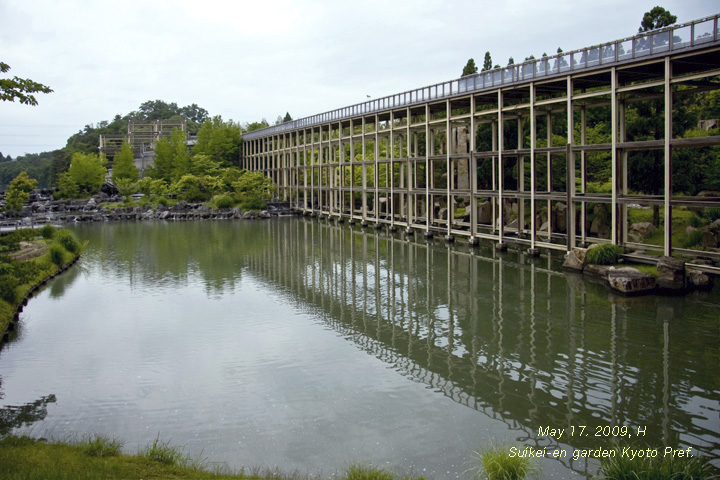
Scenery of the Kangetsu Bridge and the Kangetsu Castle
When I looked down at the right hand of the Kangetsu Bridge,
the Kyoseki Group got into my eyes.
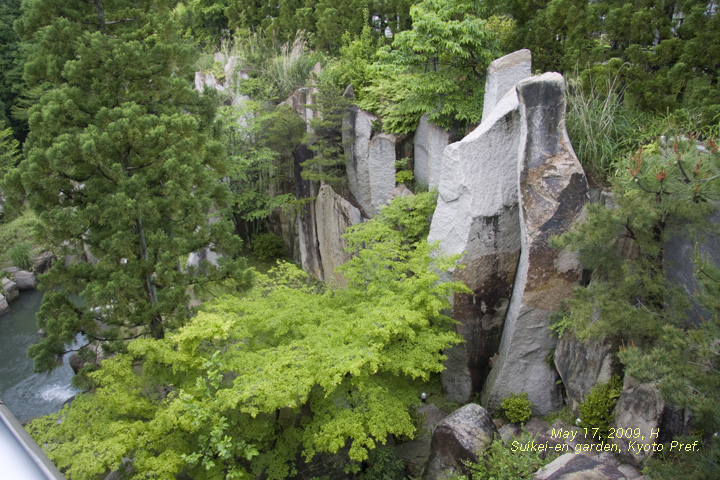
The Kyoseki Group on the right hand side of the Kangetsu Bridge
When I looked down at the left hand of the Kangetsu Bridge,
the Suikei Shelf namely the symbol of the Suikei-en garden got into my eyes.
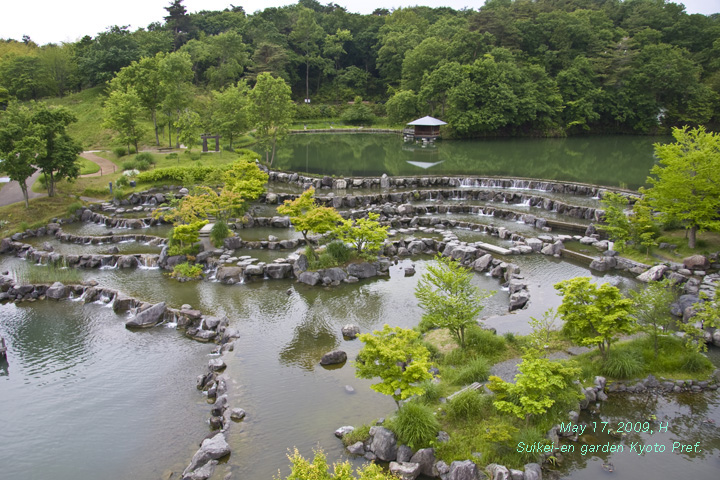
Suikei Shelf, whose theme is considered to be the same as
that of "Water mirror" of Suzaku garden in Umekohji Park.
The Momiji Ravine is on the east side of the Kangetsu Castle.
There were some small waterfalls.
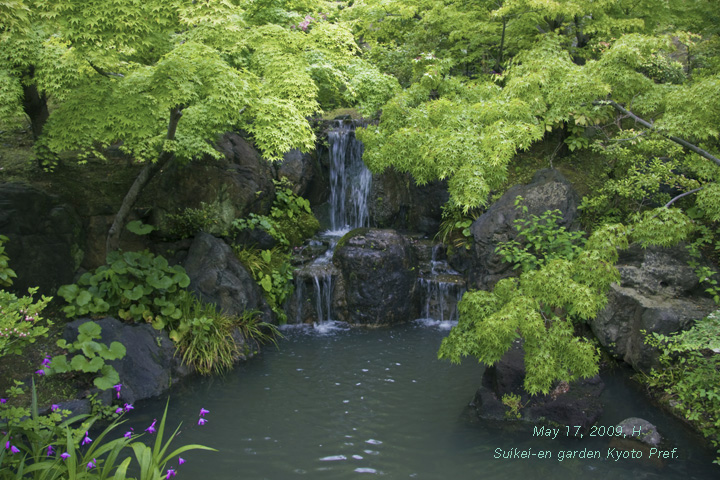
The fresh green of the leaves of the maple is beautiful.
Let's approach the Suikei Shelf (Suikei-dana).
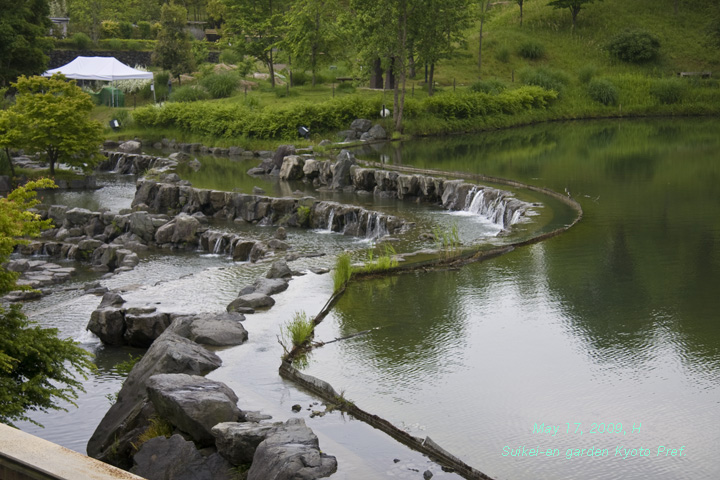
The Suikei Shelf (Suikei-dana), seen from the north side
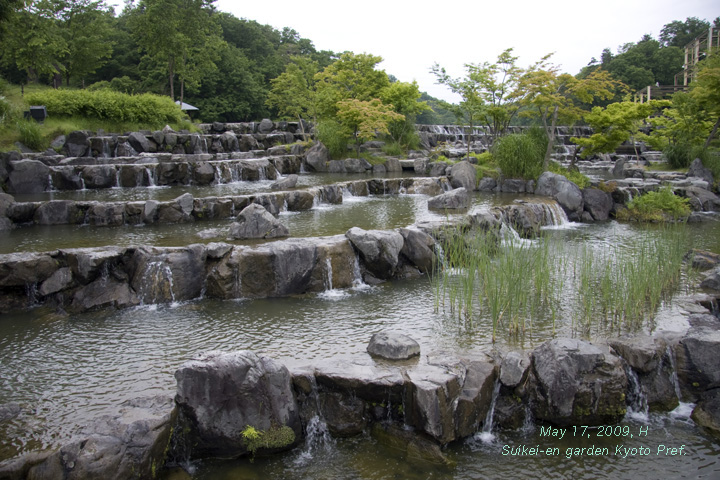
The Suikei Shelf (Suikei-dana), seen from the south side
It seems to me that the "Mizukagami" of Suzaku Garden in Umekohji Park was also created by the same idea.
Both "Mizukagami (water mirror)" of the Suzaku Garden, and "Suikei dana(shelf)" of the Keihanna Commemorative Park,
remind me of the images of terraced rice fields "Tanada" and the romance of "the moon reflected in each rice fields".
It seems to me that the former is flat plate-like, digital and urbane or sophisticated,
whereas the latter is three-dimensional, analogue and rural or pastoral.
As an example of satoyama (rural nature) of the original scenery of Japan,
I will introduce the one thousand pieces of terraced rice fields "Senmaida of Yotsuya" in Shinshiro city, Aichi Prefecture.
The information was offered by Mr. HAYASHIDA Takanori.
The terraced rice fields spreading on the southwest slopes of Kurakakeyama Hill seem to be
about from 220m to 430m above sea level, and the altitude difference seems to be about 210m.
I will show the image of the terraced rice fields which I looked down from the heights.
